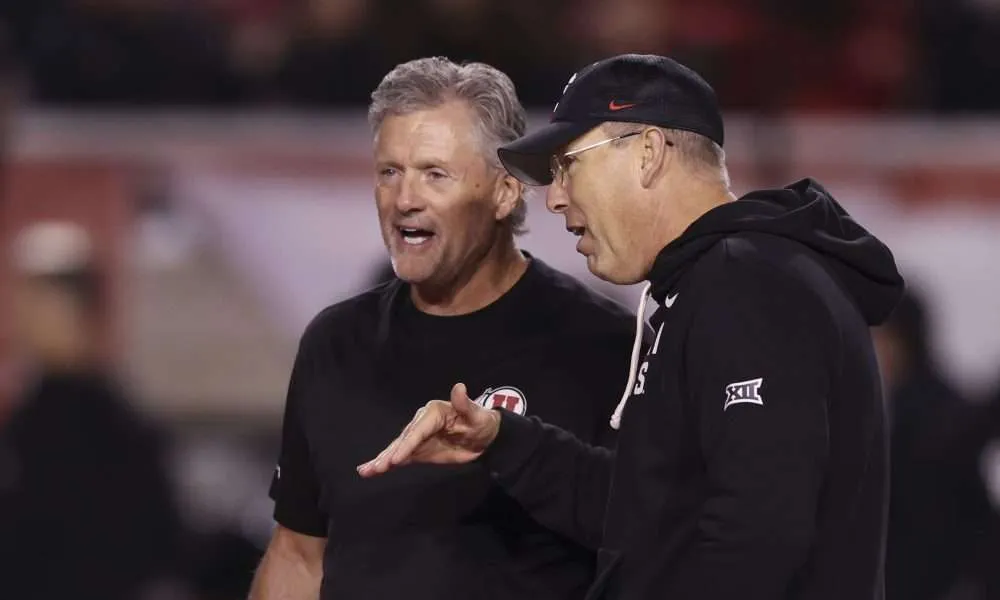Sports
Michael Leandrou
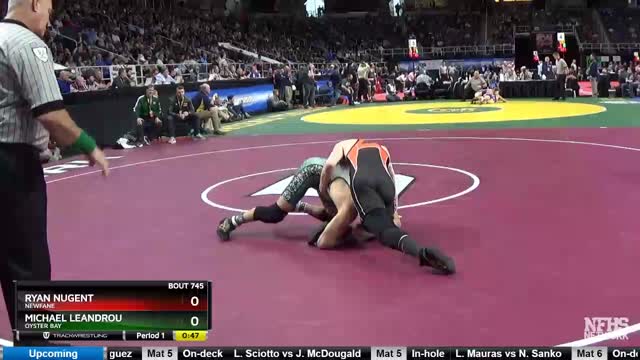
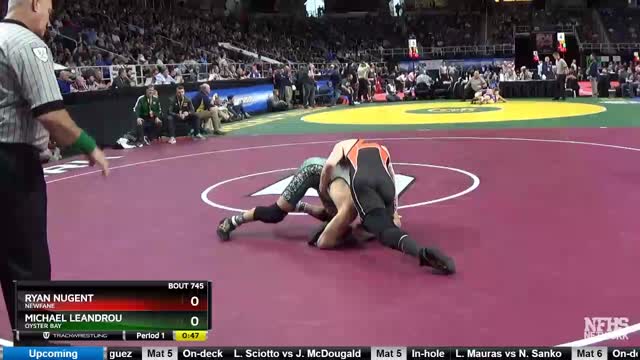

Finding a purpose after graduation can be difficult. After four years of learning in a controlled environment, applying that knowledge to the real world can be confusing, frustrating or downright scary. This is doubly true for former student athletes who must also figure out how to integrate their sport and the lessons they learned from it into their daily lives and careers.
Michael Leandrou, a 2024 alumni of Hofstra University’s wrestling team, does not seem to have had these issues. Since graduating, Leandrou has been on the move, using his degree in exercise science and his experience as a wrestler and weightlifter as a personal trainer at InForm Fitness, a boutique fitness studio in Port Washington, New York.
“It’s what I love to do with exercise science,” Leandrou said. “[It’s] the reason I went to school in the first place. So, I’m there, and then after that … I’ll train at Longo’s … I’m training [my clients] in exercises like weightlifting. And then I’m training to fight.”
Outside of work, Leandrou puts in three hours of exercise daily at Longo’s MMA – a mixed martial arts (MMA) gym founded in part by Hofstra wrestling alum and 2013-2015 Ultimate Fighting Championship (UFC) middleweight champion Chris Weidman. Here, Leandrou has been preparing for his first amateur MMA fight on June 22. He trains hard and has discovered a newfound appreciation of MMA.
“[Longo’s] is a great spot to be. I love it. I’m loving the martial arts,” he said.
Leandrou credits his wrestling experience with developing the work ethic that motivates him to put in long hours at work and at the gym.
“I’m willing to work. I want to work,” Leandrou said. “You know, wrestling instilled that hard work ethic in me, so I’m willing to work as much as I can, get as many clients as I can. Hustle in my job and then hustle in the gym. I’m an active person. I can’t really sit around.”
Now a year removed from his final season with the Pride and with his whole life ahead of him, Leandrou reflected on his rocky beginnings at the start of his wrestling career in eighth grade.
“I was boxing before I was wrestling,” Leandrou said. “So, I go to my first wrestling match and I’m in like a boxing stance. I’m high up with a high stance, and I’m like feinting. I’m moving my head, and [my opponent] is looking at me like what is wrong with this kid?”
Despite his rough start, though, Leandrou fell in love with the sport.
“I liked that it was difficult. I liked that I had to push myself – to rely on myself,” Leandrou said. “I liked that [in wrestling] if I lost it was on me; if I won, it was on me. The thrill of victory, the agony of defeat, you know, it’s the best feeling and the worst feeling in the world.”
This self-reliance has informed many of Leandrou’s goals for the near future. First, he intends to take on a more active role at InForm Fitness.
“I’d like to take my job as far as I could take it,” Leandrou said. “I’d like to, you know, expand my business … I’d like to build up my clients and then take it over one day.”
Second, Leandrou hopes to see some success as a professional fighter. “Hopefully [I] could be fighting on the professional level in five years as well,” Leandrou said. “That would be, like, the ideal scenario right now … hopefully make it pro, get some good wins.”
Leandrou recognizes how lofty this goal is and how much hard work it will take, but he feels his background wrestling for the Pride uniquely prepares him to accomplish it.
“Being a collegiate athlete and a college wrestler, you just learn how to roll with the punches,” Leandrou said. “Like if something goes wrong today, you know, you just kind of keep moving with it.”
He also spoke from a more pragmatic perspective on wrestling. “Years of wrestling experience, you know, it makes a big difference, [it] helps a lot when you’re on the ground,” Leandrou said, “I could just sit on top of people all day.”
Leandrou reflected on his athletic journey and imparted some advice for athletes at the start of their careers.
“If you love it just do as much of it as you can. Make it your priority,” Leandrou said. “Don’t put a lot of pressure on yourself; just have fun. That’s what it’s about: just keep on taking it one step at a time. Don’t put a lot of pressure on yourself and just have fun with things. I know sometimes you just can’t. Sometimes there’s just too much pressure on you, but try to love the good things about it.”
Sports
Potsdam’s Sophia Layer earns SUNY Potsdam volleyball accolade

POTSDAM – A student athlete from Potsdam was one of three SUNY Potsdam women’s volleyball players to be named to the College Sports Communicators Academic All-District Team. The teams are selected by CSC member directors of athletic communications to recognize the nation’s top student-athletes for their combined performances on the field and in the classroom.
Senior captain and setter Sophia Layer played in all 27 matches with 25 starts this Fall. She recorded 604 assists, 212 digs, 70 kills, 26 aces and 19 blocks. She ranked fourth in the SUNYAC in assists. In her career, she totaled 2087 assists, 723 digs, 101 kills and 35 blocks. Layer is the just the fourth Bear in the last 20 years to reach the 2000-assist mark.
To be eligible for the honor, athletes need to be at least a sophomore, maintain at least a 3.5 GPA, compete in 90 percent of their teams’ contests or start in 66 percent.
Sports
Jacksonville All-First Coast team, FHSAA girls volleyball
Dec. 28, 2025, 4:59 a.m. ET
- The Times-Union selects its annual All-First Coast team for high school girls volleyball in 2025.
- The list includes first-team through third-team and honorable mention picks.
- Regional finalist Beachside has two first-team honorees, outside hitter Adriana Jeanpierre and setter Mollie VanDeusen.
The Times-Union selects its annual All-First Coast team for high school girls volleyball across Jacksonville and Northeast Florida for the 2025 FHSAA season.
FIRST TEAM
OH Sophia Albaugh, Jr., Bolles

Blasted 320 kills (.213 hitting percentage) with 66 aces, 122 digs; committed to Boston College.
S Haydin Froehlich, Sr., Ponte Vedra
Prolific setter delivered 748 assists, plus 163 digs, 39 blocks, 43 aces, 51 kills; committed to North Florida.
OH Nova Hewlett, Jr., Trinity Christian
New Conqueror amassed huge numbers with 368 kills (.241 hitting percentage), 219 digs.
OH Adriana Jeanpierre, Sr., Beachside
Delivered thunderous kills (367, .255 hitting percentage) with 275 digs, 31 blocks; headed to Mississippi State as setter.
MB Taylor Marts, Sr., Harvest Community
Powerful middle led Warriors to Class 1A final four with 371 kills, 76 blocks; committed to Belmont Abbey.
OH Camden Rahn, Sr., Middleburg
Hard hitter for Broncos recorded 355 kills (.242 hitting percentage), 226 digs, 38 aces; West Virginia commit.
L Alexis Sowers, Sr., Bishop Kenny
Led Crusaders to regional final from the defensive side, with 622 digs and 56 aces; signed with Kennesaw State.
S Mollie VanDeusen, Jr., Beachside
Florida State commit may be area’s most versatile player; 419 assists, 205 kills, 332 digs and 52 aces for Barracudas.
SECOND TEAM
RS Mae Abernathy, So., Wolfson
Sparked breakthrough Wolfpack season; 256 kills, 196 digs, 37 aces for Gateway champions.
S Erica Duffy, Sr., Beachside
Old Dominion commit displayed versatility with 352 assists, 162 kills, 227 digs.
OH Kyla Hollis, Jr., Mandarin
Bounced back from injury with 284 kills, 280 digs.
MB Lily Keeley, Jr., Ponte Vedra
Wofford commit is a force at the net, with 202 kills (.347 hitting percentage) and 45 blocks.
OH Isabela Lopez, Sr., Providence
Bashed 311 kills (.279 hitting percentage) along with 160 digs for Stallions; Virginia Tech commit.
S Keely Pou, Sr., Fletcher
Among Gateway Conference’s all-time assist leaders with 892 this year and 2,456 total; Stetson signee.
L Avery Webb, Sr., Ponte Vedra
Among Northeast Florida’s best in the back row with 350 digs, 47 assists, 50 aces; committed to Virginia Tech.
S Hazel Williams, Sr., Fleming Island
Golden Eagle record-setter delivered 554 assists, 168 digs, 61 aces.
THIRD TEAM
RS Lillie Eason, So., Fleming Island
Impressed with 309 kills (.210 hitting percentage) and 212 digs.
MB Molly Fitzpatrick, Sr., Bartram Trail
Led Bears with 256 kills, adding 53 aces and 39 blocks; committed to Georgia College and State.
S Emma Hernesman, Jr., Trinity Christian
Supplied 649 assists with 209 digs, 63 kills.
OH Kate Lowery, Sr., Middleburg
Finished with 251 kills, 222 digs, 36 aces for Broncos; committed to Tampa.
OH Trinity Pearson, Sr., Wolfson
Recorded 194 kills, 198 digs for Gateway Conference champions.
L Isabella Taveras Seda, Jr., Beachside
Active libero finished with 495 digs, 63 assists; committed to Tampa.
MB Maddie Wilkey, Sr., Bishop Kenny
A defensive force for regional finalist Crusaders, recording 70 blocks along with 210 kills (.325 hitting percentage).
OH Sinei Wood, Sr., Columbia
High-scoring attacker finished with 409 kills (.376 hitting percentage) and 344 digs for Tigers; signed with Rollins.

Honorable mention
S Lily Adams, Sr., Bolles; OH Elina Adhikari, Sr., Harvest Community; L Pria Adhikari, Sr., Harvest Community; MB Chelsea Akakatang, So., Bishop Kenny; MB Maysie Bader, Jr., Middleburg; MB Myla Barker, Sr., Clay; MB Julianna Baskin, Sr., Providence; OH Emme Bordinca, Jr., Bishop Snyder; MB Riley Bridda, So., Fletcher; OH Lauren Brosky, Jr., Fleming Island; S Payton Cannon, Sr., Ridgeview; S Emma Clifton, Sr., Providence; L Ashley Crick, Sr., Christ’s Church; OH Jasmine Douglas, Jr., Yulee; DS Alexis Galani, Jr., Episcopal; S Jordan Gilbreath, Sr., Bartram Trail; OH Gracie Gorman, Sr., Tocoi Creek; OH Grace Gottberg, Jr., Baldwin; OH Kaveri Harris, Jr., Yulee; OH Sophia Hayes, Sr., Nease; S Tynlee Jarrell, So., Baldwin; MB Payton Jones, Jr., Atlantic Coast; MB Rayna Joquin, Sr., Mandarin; L Anela Manganti, Sr., Stanton; S Kaleigh Marquart, Jr., Keystone Heights; DS Lauren McCarthy, Sr, Bishop Kenny; MB Chloe McGowan, Jr., Beaches Chapel; S Emi Mejia, Jr., St. Augustine; OH Amra Mulalic, Jr., Menendez; S Avery Music, Sr., Suwannee; L Eleny Pham, Sr., Bishop Snyder; OH Kendall Proffitt, So., St. Johns Country Day; L Lacey Reed, Jr., Episcopal; RS Amelia Richter, Jr., Fletcher; S Jiyanna Rivera, Sr., Oakleaf; RS Mia Rivera, Jr., Keystone Heights; S Carter Rowell, Fr., Wolfson; MB Jailyn Simmons, Sr., Union County; RS Naraiya Thompson, Sr., Sandalwood; L Anslee Wells, Palatka; MB Maddie Wilkey, Sr., Bishop Kenny.
Note: The Times-Union evaluates numerous factors in selecting the All-First Coast teams, including nominations from coaches, observations from the Times-Union sports staff, statistical performances and strength of opposition.
Sports
Top honours for national volleyball
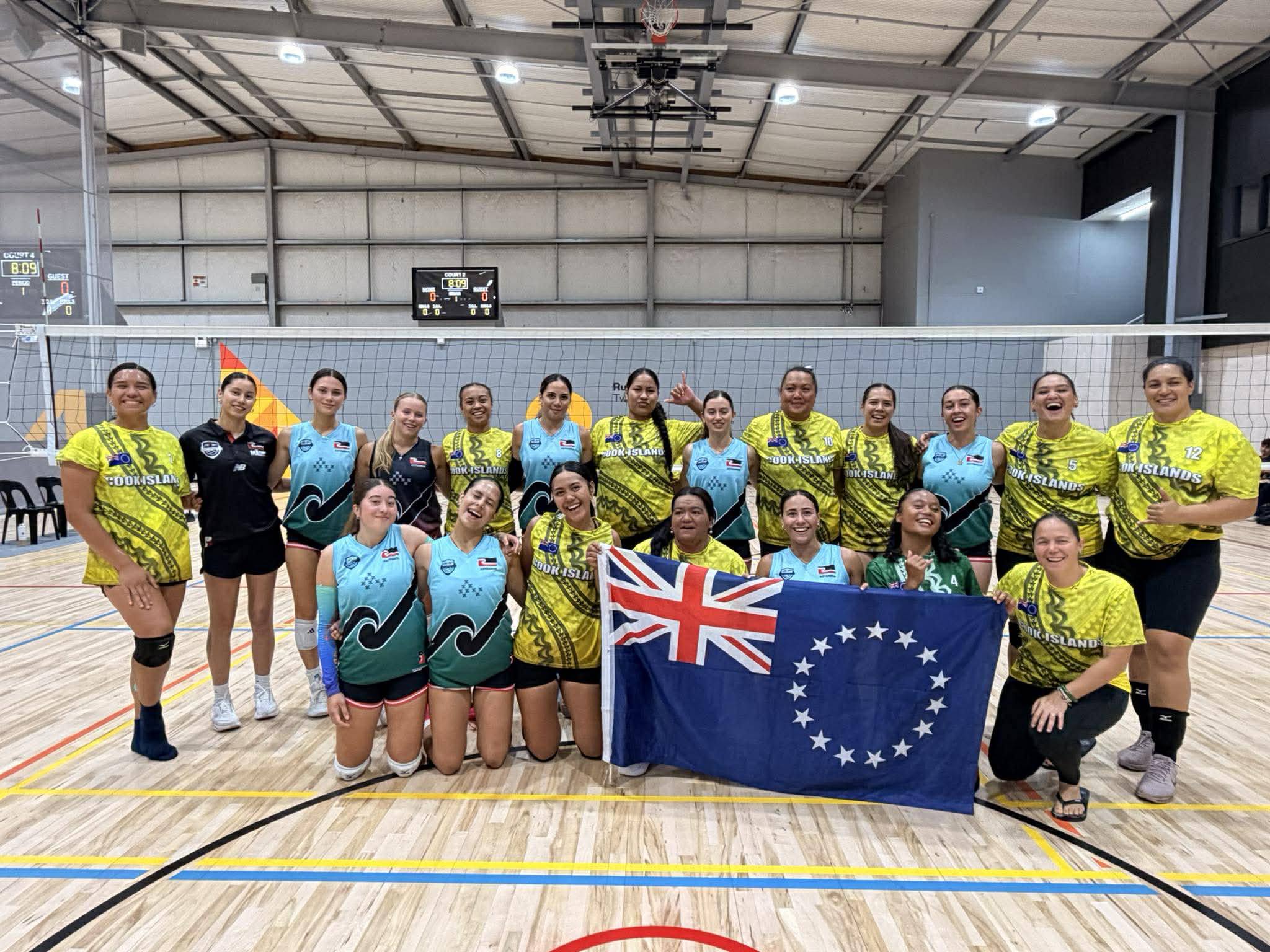

Cook Islands men’s and women’s volleyball teams received recognition at the recent Matariki Cup competition held in Tauranga. CIVF- FIONNA MATUTU/25122401/25122402
The Cook Islands men’s and women’s volleyball teams received recognition at the recent Matariki Cup competition held in Tauranga, New Zealand.
Jackie Rongo, Cook Islands Volleyball Federation (CIVF) development coordinator and women’s coach, received the Coach of the Tournament Award.
“I was blown away and humbled receiving the Coach of the Tournament Award! Even more so, I was very proud of our athletes that achieved individual recognition for their efforts,” Rongo said.
“Each athlete has trained or currently trains under ‘Ātui’anga ki te Tango (AKTT) Volleyball – the team I coach alongside Liam Clegg, who I am extremely thankful to for being on this journey with me.
“Seeing these athletes shine in an international tournament and receive recognition as Cook Islands National Volleyball team players was the cherry on top.”
Rongo said Cook Islands women’s captain Tuaana Mitchell and men’s captain Ryan Nicholson led their respective teams well.
The men’s and women’s teams finished as runners-up, losing to AMP Tipua and AMP Waiariki in their respective finals.
“A special mention to men’s MVP Jacques Koteka and men’s vice-captain, who was part of the very first team I ever coached and is still with AKTT today. He is one of the hardest working athletes I know and it was awesome to see him playing high level volleyball in this tournament.”
Rongo said the 4th Matariki Cup Volleyball Challenge was a true embodiment of the spirit of why this competition was created – “to strengthen our cultural connection and bond across Te Moananui-a-Kiva through our shared love of volleyball.”
With Kōrero o te ‘Ōrau as major sponsor, the tournament was held in Rarotonga in 2022 and 2023, hosted by the Cook Islands Volleyball Federation. Last year, it was hosted by Volleyball Tahiti and this year it was held in Tauranga, New Zealand, hosted by Aotearoa Maori Poirewa.
Rongo said the Aotearoa Maori Poirewa (AMP) under the direction of Ngākohu and Tui Papunui were incredible hosts in Tauranga, housing them at the beautiful Hungahungatōroa Marae and organising their competition playing at the new flash courts at Haumaru Sport and Recreation Centre.
“We are so grateful! Our men’s and women’s teams truly enjoyed their experience. It was so awesome to see our home-grown local athletes from Rarotonga and Aitutaki play at the next level.”
Rongo acknowledged everyone – parents and guardians, volleyball community here and in Aotearoa, sponsors, her husband Dr Teina Rongo and children – who supported them in every shape or form to build indoor volleyball opportunities for the national team athletes in the Cook Islands.
“Atawai Wolo to our Pukapuka community in Auckland and Minister Tingika Elikana who accommodated us on our way to Tauranga, and to our Cook Islands families based in Tauranga for caring for us throughout,” she said.
“One last special thanks to the Cook Islands Volleyball logistics and management team along with the travelling aunties and players for doing what they do to keep us as one. We started together and finished together!
“There is more work to do for sure. We look forward to hosting AMP on Rarotonga in 2026.”
Awards
Womens: Best Spiker – Tuaana Mitchell, Best Blocker – Twina Tangirere, Best Defender – Elizabeth Akaruru; Mens: Most Valuable Player – Jacques Koteka, Best Server – Jacques Koteka, Best Blocker – Jacques Koteka, Best Defender – Ryan Nicholson.
Sports
Adriana Jeanpierre, Beachside, All-First Coast girls volleyball award
Dec. 28, 2025, 5:00 a.m. ET
- Adriana Jeanpierre has been named the Times-Union’s All-First Coast volleyball player of the year.
- The Beachside senior achieved career highs in kills, hitting percentage, and digs this season.
- Despite playing as an outside hitter in high school, Jeanpierre has signed to play as a setter for Mississippi State.
Spike after spike through four autumns, Adriana Jeanpierre kept whacking the volleyballs across the net at Beachside. A sure sign of a future college outside hitter, right?
Not so simple. As it turns out, Jeanpierre was becoming Northeast Florida’s best, all while playing a position that’s actually her second-best.
She’s not complaining. After all, in the big picture, adjusting to life as an outside hitter was only extending her skill set.
“You never know where a coach is going to put you, and you don’t want to have to say, ‘Oh, I don’t know how to do that,'” she said.
Through four years, Beachside’s hard-hitting Jeanpierre helped put Northeast Florida’s newest public high school on the state map, and now the senior completes her St. Johns County tenure as the Times-Union’s All-First Coast player of the year for volleyball.
A top contributor in all four years on Great Barracuda Way, Jeanpierre achieved career highs this year in kills (367), hitting percentage (.255) and digs (275) while boosting Beachside to the Florida High School Athletic Association Region 1-5A final.
Pretty impressive for a player who, in the future, will compete in college as a setter, not an outside hitter. And pretty impressive for a program that didn’t even exist until August 2022.
“At first, we were practicing in a middle school gym, because we didn’t have a gym [on campus] yet,” she said. “I think that brought us all together.”
SETTING UP VICTORY
Jeanpierre grew up in a Navy family, settling on the First Coast around 2019. It didn’t take long before Austin Lanteigne, now Beachside’s head coach, got the chance to see her in action.
“She had the combination of the athleticism and the ability to jump, even though she’s not the tallest, and the knowledge of how to play the game,” Lanteigne said. “It’s the perfect mix.”
Jeanpierre had tried a range of activities — “tennis, gymnastics, dance, you name it” — but she decided on volleyball late in her elementary school years.
“My mom was a volleyball coach and I would always go to practice with her,” Jeanpierre said. “I had kind of an early chance [to learn the sport].”
Early on, she said, she played libero in club volleyball. Then, she soon adjusted to life as a setter, the position in her future at Mississippi State.
But once she arrived as part of the first-ever freshman class at brand-new Beachside, she was joining a program that was long on setting skills — that class also included setter Erica Duffy, like Jeanpierre an All-First Coast selection heading to Division I volleyball — but not as deep when it came to hitting power.
So for four years, Jeanpierre unleashed her vigorous vertical leap to smack kills in bunches: 257 in her freshman year, followed by 331, 321 and finally 367, often nestled into the opposite corners. Along the way, she honed her timing working with versatile setters Duffy and Mollie VanDeusen, who developed the timing to seamlessly set up Jeanpierre or each other.
Now that she’s just as comfortable scoring herself as she is setting the table for teammates, she has a more complete feel for the action on the court.

“I feel like moving from an outside hitter at Beachside to a setter at Mississippi State helps me understand what the hitters need, like if I should set the ball higher so they can beat the block,” she said. “It gives me a double perspective so I can help them score.”
Jeanpierre is now looking forward to a future in Southeastern Conference volleyball and to learning the game at Mississippi State under eighth-year coach Julie Darty Dennis, formerly at Jacksonville University.
Outside hitter? Setter? Libero? What’s next?
“No matter what position she plays,” Lanteigne said, “she will make the program better with her versatility and her positive mindset.”
All-First Coast volleyball player of the year
Adriana Jeanpierre
Senior, Beachside
Age: 18
Resume: Recorded 367 kills, 275 digs, 31 blocks and .255 hitting percentage for Region 1-5A finalist Barracudas. … Florida Athletic Coaches Association all-star selection. … Completed Beachside career with 1,276 kills, 948 digs, 75 blocks, 37 assists and 156 aces. … Signed with Mississippi State as a setter.
Sports
Assistant Director, Behavioral Health & Performance in New Orleans, LA for Tulane University

Details
Posted: 27-Dec-25
Location: New Orleans, Louisiana
Type: Full-time
Categories:
Operations
Sector:
Collegiate Sports
Required Education:
Masters
Internal Number: IRC34061
Position Summary: The Assistant Director of Behavioral Health & Performance Specialist provides clinical leadership, direct services, and program oversight within Tulane University’s Department of Intercollegiate Athletics. Reporting to the Assistant Athletic Director, Behavioral Health & Performance, this position is responsible for managing the delivery of comprehensive mental health services to student-athletes. The Assistant Director of Behavioral Health & Performance ensures high-quality, evidence-based care while collaborating with internal and external partners to promote student-athlete wellbeing, resilience, and performance.
Essential Functions of the Job:
1. Function: Clinical Services – Provides psychotherapy (individual, crisis, and group) to Tulane student-athletes, with emphasis on performance-related and sport-specific concerns; conducts intake evaluations, diagnostic assessments, treatment planning, and referrals for student-athletes, including coordination with athletic and medical partners as needed; oversee clinical caseload management for the Behavioral Health & Performance unit to ensure timely access for new student-athlete clients; serves as a primary point of contact, with student-athlete consent, for communication with collateral parties including parents, coaches, medical staff, faculty, and administrators; ensures the Behavioral Health & Performance unit’s adherence to university, NCAA, and professional standards, updating and implementing policies and procedures as needed; provides leadership in case formulation, clinical decision-making, and team consultation to support effective care delivery; oversee and ensure that treatment approaches are tailored to the unique needs of student-athletes, while maintaining professional standards of care; directs case disposition decisions, coordinating referrals internally and externally to ensure comprehensive support for student-athletes; carries an appropriate treatment caseload, including individual therapy cases and leading and/or co-leading groups and workshops when appropriate, and takes responsibility for ongoing monitoring and management of case assignments; provides leadership and oversight during complex cases, crisis consultations, and hospitalizations, serving as the clinical point of escalation; documents patient records in EHR in a timely manner and ensures that the records are accurate; maintains professional standards of mental health care delivery, including ethical and legal issues; provides consultation and supervision to Clinical Case Manager; and promotes professional development for the Behavioral Health & Performance team, including ongoing training, supervision, and performance feedback. (65%)
2. Function: Leadership & Supervision – Provides consultative assistance to the Tulane community and Campus Partners regarding mental health as needed; represents the Tulane Athletics at campus events, including weekend parent and student orientation sessions, off-hours outreach and workshop opportunities, etc.; forms positive working relationships with Campus Partners and others within Student Affairs and throughout the University Community; demonstrates willingness to be a Tulane Athletics representative and campus presence at a variety of events as needed; 0versee daily operations of the Behavioral Health & Performance case management team; provide supervision, mentorship, and consultation to case management, and interns as appropriate; and assist in hiring, training, and evaluating team members to support departmental goals. (10%)
3. Function: Program Development & Collaboration – Partner with the Assistant Athletic Director, Behavioral Health & Performance to design and implement innovative mental health and performance initiatives; develop workshops, team training, and outreach programming to enhance student-athlete wellbeing and reduce stigma around mental health; serve as a key liaison between Athletics, the Tulane Center for Sport, Tulane Institute of Sports Medicine, and other campus and community resources; and contribute to the development of policies, procedures, and best practices for student-athlete care. (10%)
4. Function: Administrative & Compliance – Collect and analyze data to evaluate program effectiveness and identify opportunities for improvement; ensure departmental practices align with NCAA, institutional, and professional ethical guidelines; and uphold strict confidentiality standards and safeguard student-athlete records. (5%)
5. Function: Emergency Preparation and Response – Serves as a member of the department and/or divisional crisis response teams and/or the University’s Essential Personnel, as needed; carries out activities detailed in the All-Hazards Plan; participates/contributes to annual review of emergency processes and procedures; maintains departmental emergency equipment and supplies; assists with coordination/support of department operations during emergencies; attends training to maintain knowledge of emergency response protocols; adheres to federal, state, and local regulatory requirements to maintain safety and emergency protocols; and participates in regularly scheduled drills to maintain safety procedures and university protocols. (5%)
6. Function: Other Duties – Performs other duties as requested or required, whether or not specifically mentioned in this job description. (5%)
Required Education and Experience:
- Master’s Degree in Counseling, Social Work, or Psychology
- Current Licensed Professional Counselor, PLPC, LCSW or other mental health therapist license recognized by the State of Louisiana (or the ability to obtain within 30 days of the start date)
- Experience working with athletic population
- One year of clinical experience
Required Knowledge, Skills, and Abilities/Competencies:
- Ability to protect confidentiality and meet all ethical standards associated with the practice of psychology within a university counseling center context
- Strong clinical expertise in the assessment and treatment of mental health conditions, including anxiety, depression, trauma, eating disorders, and sport-performance concerns.
- Outstanding oral and written communication skills, able to dialogue effectively with a wide range of students, faculty and staff
- Ability to effectively utilize an electronic medical records system
- Demonstrated leadership, supervisory, and team-building skills.
- Excellent communication and collaboration skills with diverse stakeholders, including students, families, coaches, administrators, and healthcare providers.
- Knowledge of developmental trends and concerns of undergraduates, as well as graduate and professional students
- Ability to engage in an ongoing pursuit of self-knowledge and understanding of own personal factors affecting clinical work
Preferred Qualifications:
- Training and interest in working with multicultural issues and students with diverse identities
- Experience in developing and delivering case management to high profile athletes and their families.
- Prior experience working with NCAA Division I student-athletes or high-performance/elite athlete populations.
- Certification or advanced training in sport psychology, trauma-informed care, or performance enhancement strategies.
- Experience in administrative leadership, program development, or interdepartmental collaboration.
NCAA Related:
Ensures that all Department of Athletics and University related activities operate in full compliance with university, conference, and NCAA rules and regulations. Attends and participates in scheduled compliance seminars and complies with all the Athletic Department’s efforts to monitor compliance with NCAA regulations. Seeks interpretations from the compliance staff before acting when necessary. Reports potential rules violations immediately. Completes required compliance paperwork in a timely and efficient manner. Monitors all of their areas and/or programs activities closely to maintain compliance with applicable rules and regulations.
In order to be considered for this position, applicants are required to apply for IRC34061 via the Tulane University employment website (https://jobs.tulane.edu/position/IRC34061). The position is OPEN UNTIL FILLED.
Please Note: Tulane University has officially adopted a mandatory COVID-19 vaccination policy, which includes the requirement of a booster when eligible. All employees and visiting faculty must be fully vaccinated with a COVID-19 vaccination or obtain approval for a medical or religious exemption prior to beginning employment.
Tulane University is an EOE/M/F/Vet/Disabled employer with a strong commitment to diversity and inclusion. Applications by members of all underrepresented groups are encouraged.
About Tulane University
Founded in 1834, Tulane is one of the most highly regarded and selective independent research universities in the United States. A member of the prestigious Association of American Universities, we take pride in being a part of this select group of 62 universities with “pre-eminent programs of graduate and professional education and scholarly research.” Our schools and colleges offer undergraduate, graduate and professional degrees in the liberal arts, science and engineering, architecture, business, law, social work, medicine and public health and tropical medicine. With a seventeen-sport program that competes in the American Athletic Conference, Tulane Athletics is on the rise, boasting one of the oldest and most storied athletics programs in the Southeast, and indeed the nation.Tulane University is an EOE/M/F/Vet/Disabled employer with a strong commitment to diversity and inclusion. Applications by members of all underrepresented groups are encouraged.
Connections working at Tulane University
Sports
Prep Volleyball: Texas High earns multiple honors in District 10-5A awards

TEXARKANA, Texas — Texas High was well-represented in the District 10-5A all-district volleyball selections, with two players earning superlative honors and several more recognized across the first and second teams.
Senior Kyleigh Perkins was named Co-Utility Player of the Year, sharing the award with Lufkin’s Akira Smallwood. Taryne Stiger, also a senior, earned Co-Blocker of the Year alongside Hallsville sophomore Kylee Fernandez.
Eva Treadway and Sydney Woods were selected to the first team, while Kenley Dewberry and Cruz Hopkins were named to the second team.
Four players earned honorable mention: Karasha Hayes, Zanasia Nelson, Deja Aubrey and Lexie Burton.
Texas High also had 12 players named to the Academic All-District team: Aubrey, Burton, Madelyn Carroll, Dewberry, Hopkins, Phoenix Jones, Acasia Nelson, Zanasia Nelson, Perkins, Stiger, Treadway and Woods.
Hallsville’s Kaycin Farrell was named Most Valuable Player, and Hallsville head coach Tara Wager and her staff earned Coaching Staff of the Year.
——
2025 District 10-5A All-District Honors
Most Valuable Player: Kaycin Farrell – Hallsville – JR. No. 25
Most Valuable Hitter: Chesney McCullough – Lufkin – SR. No. 4
Most Valuable Setter: Lilly Fry – Hallsville – SR. No. 3
Co-Utility Player of the Year: Kyleigh Perkins – Texas High – SR. No. 2 and Akira Smallwood – Lufkin – SR. No. 12
Libero of the Year: Danika Cantu – Marshall – JR. No. 13
Co-Blocker of the Year: Taryne Stiger – Texas High – SR. No. 6 and Kylee Fernandez – Hallsville – SO. No. 12
Server of the Year: Ava Wise – Whitehouse – SR. No. 2
Newcomer of the Year: Ja’Lee Flores – Tyler – SR. No. 9/17.
Coaching Staff of the Year: Tara Wager – Hallsville
——
1st Team All-District
Lyla Evans – Hallsville
Madi Farrell – Hallsville
Tailor Benson – Hallsville
Eva Treadway – Texas
Sydney Woods – Texas
Ellie Cooley – Whitehouse
Vaida Hocker – Whitehouse
Lily Holzbauer – Whitehouse
Kaylee Garner – Whitehouse
Savannah Bergman – Lufkin
Aleciera Smallwood – Lufkin
Kinlee Smith – Marshall
Jazlyn Duran – Tyler
Kaelyn McLean – Tyler
Emmy Finnerude – Nacogdoches
——
2nd Team All-District
Livi Vineyard – Hallsville
Miller Goswick – Hallsville
Caroline Slaten -Hallsville
Kendall Bostik – Whitehouse
Ava Reese – Whitehouse
Jazlynn ONeal – Lufkin
ZaNyia Johnson – Lufkin
Kenley Dewberry- Texas High
Cruz Hopkins – Texas High
Ella Kate Runnels – Marshall
Addi Watkins – Marshall
Ruby Hulen – Mount Pleasant
Miyah Amador-Farrier – Mount Pleasant
Zarriya Swindle – Nacogdoches
Kinsley Fields – Nacogdoches
Elaine McCown – Jacksonville
Gretchen Ault – Jacksonville
Ryan Vega – Tyler
Marilyn Cardenas – Tyler
——
Honorable Mention
Karasha Hayes – Texas High
Zanasia Nelson – Texas High
Deja Aubrey – Texas High
Lexie Burton – Texas High
——
Academic All-District
Texas High: Deja Aubrey, Alexeia Burton, Madelyn Carroll, Kenley Dewberry, Cruz Hopkins, Phoenix Jones, Acasia Nelson, Zanasia Nelson, Kyleigh Perkins, Taryne Stiger, Eva Treadway, Sydney Woods


-

 Motorsports3 weeks ago
Motorsports3 weeks agoSoundGear Named Entitlement Sponsor of Spears CARS Tour Southwest Opener
-
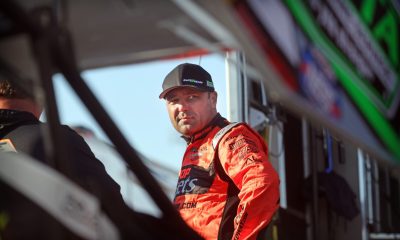
 Motorsports3 weeks ago
Motorsports3 weeks agoDonny Schatz finds new home for 2026, inks full-time deal with CJB Motorsports – InForum
-

 Rec Sports3 weeks ago
Rec Sports3 weeks agoDavid Blitzer, Harris Blitzer Sports & Entertainment
-
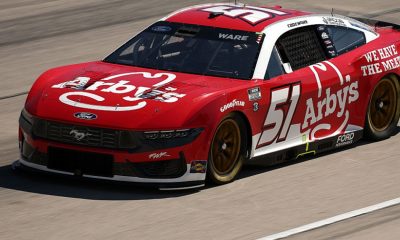
 Motorsports3 weeks ago
Motorsports3 weeks agoRick Ware Racing switching to Chevrolet for 2026
-

 NIL2 weeks ago
NIL2 weeks agoDeSantis Talks College Football, Calls for Reforms to NIL and Transfer Portal · The Floridian
-
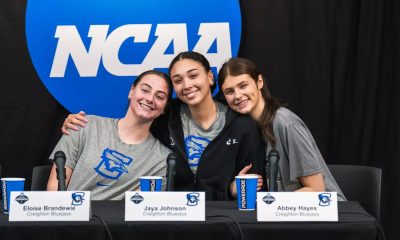
 Sports2 weeks ago
Sports2 weeks ago#11 Volleyball Practices, Then Meets Media Prior to #2 Kentucky Match
-

 Motorsports2 weeks ago
Motorsports2 weeks agoSunoco to sponsor No. 8 Ganassi Honda IndyCar in multi-year deal
-
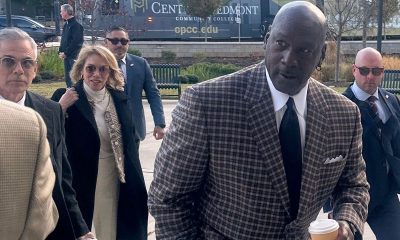
 Motorsports3 weeks ago
Motorsports3 weeks agoNASCAR owes $364.7M to teams in antitrust case
-
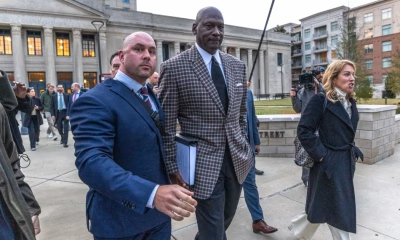
 Motorsports2 weeks ago
Motorsports2 weeks agoNascar legal saga ends as 23XI, Front Row secure settlement
-
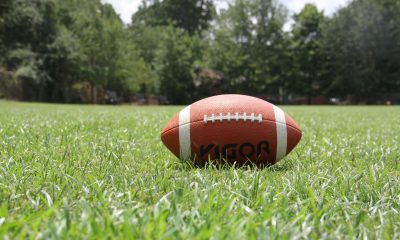
 Rec Sports3 weeks ago
Rec Sports3 weeks agoWhy the Texas Sport for Healing Fund Should Return – The Daily Texan



























































